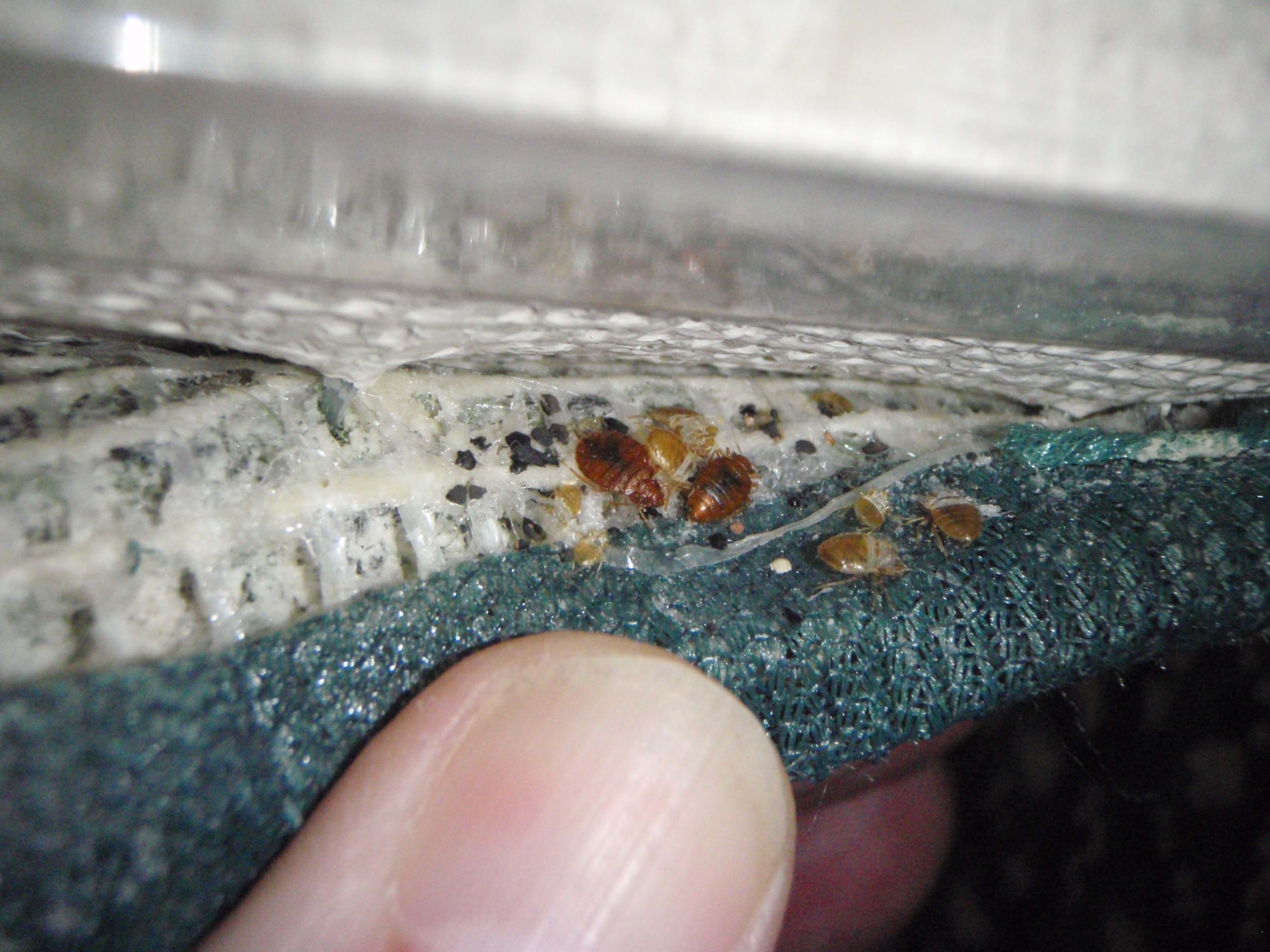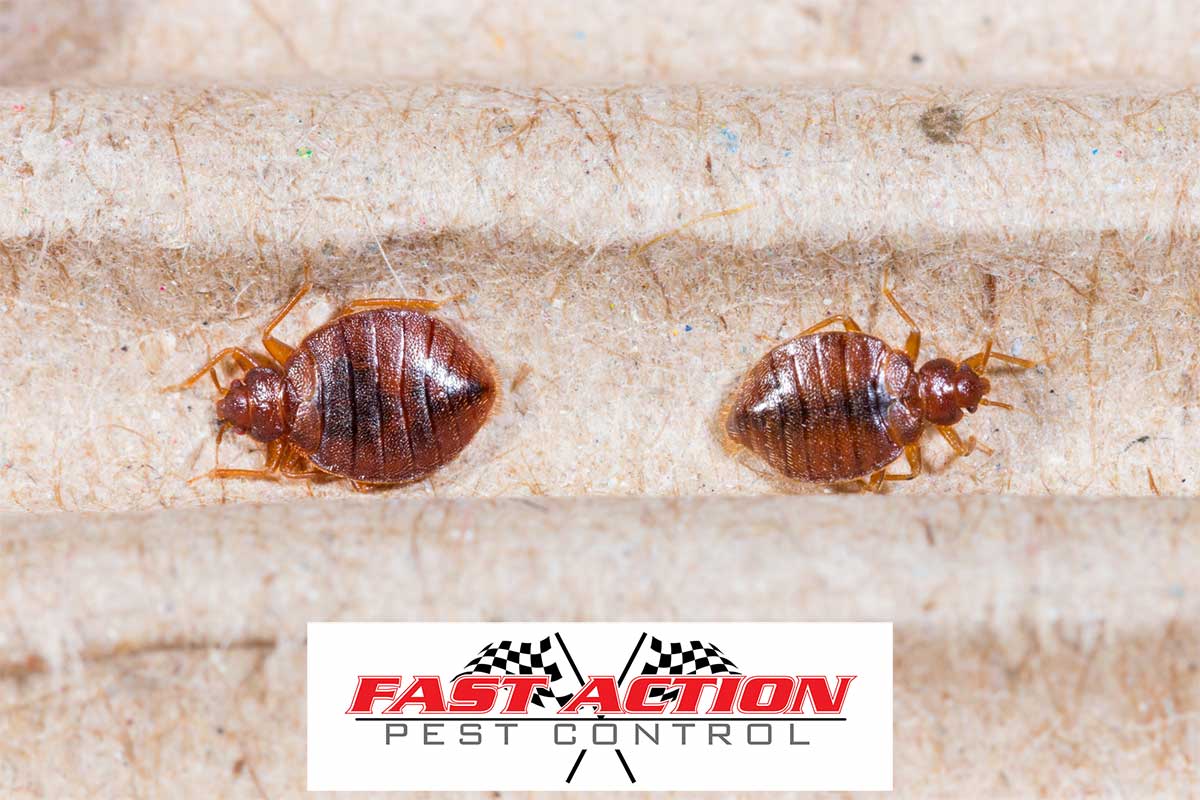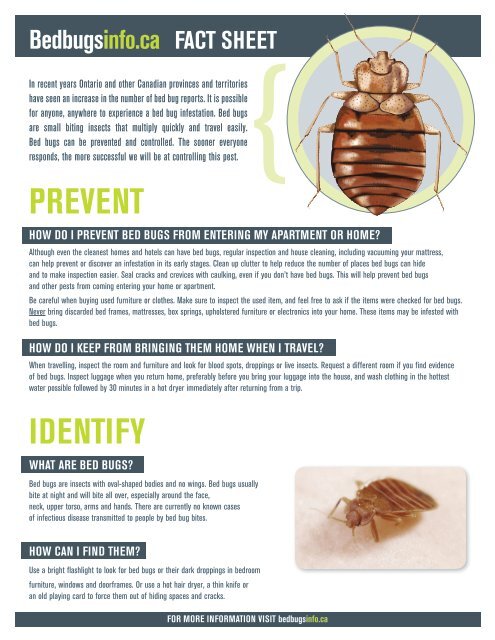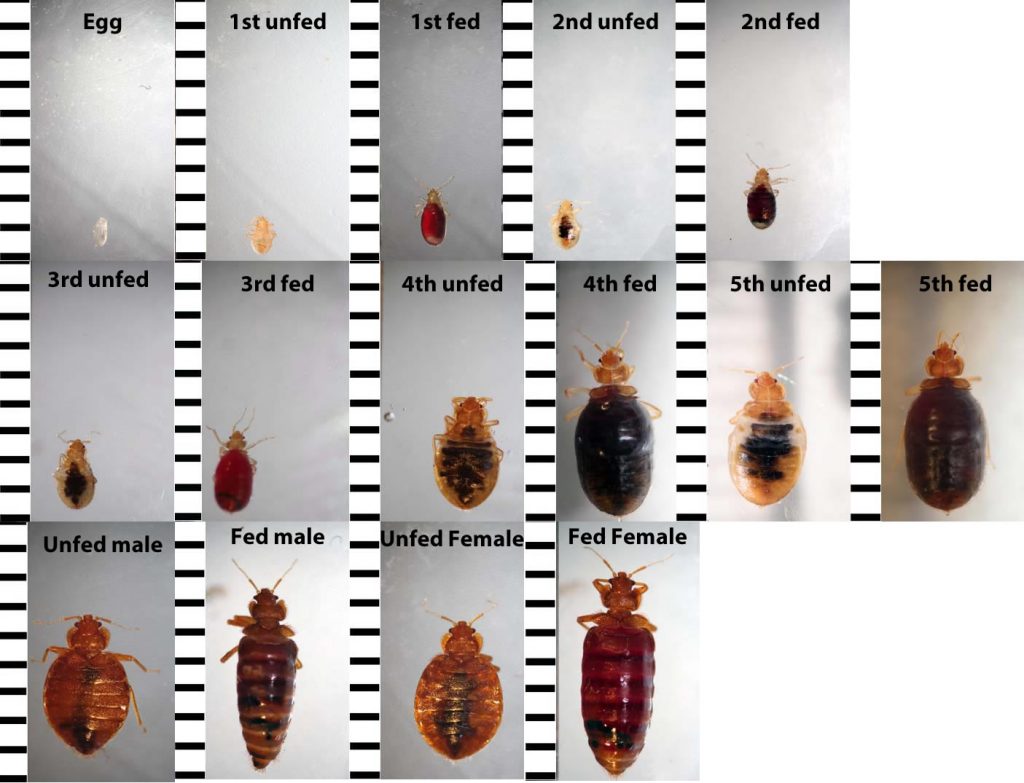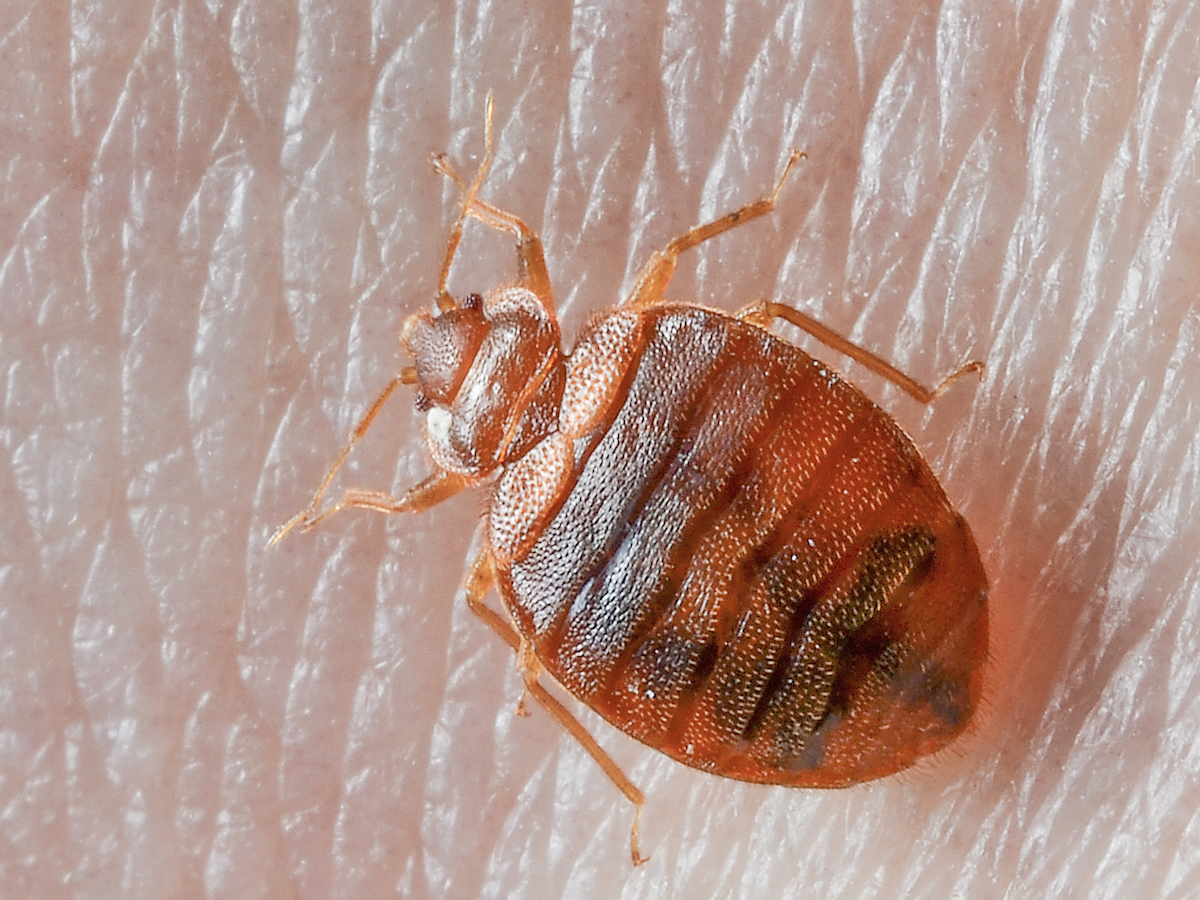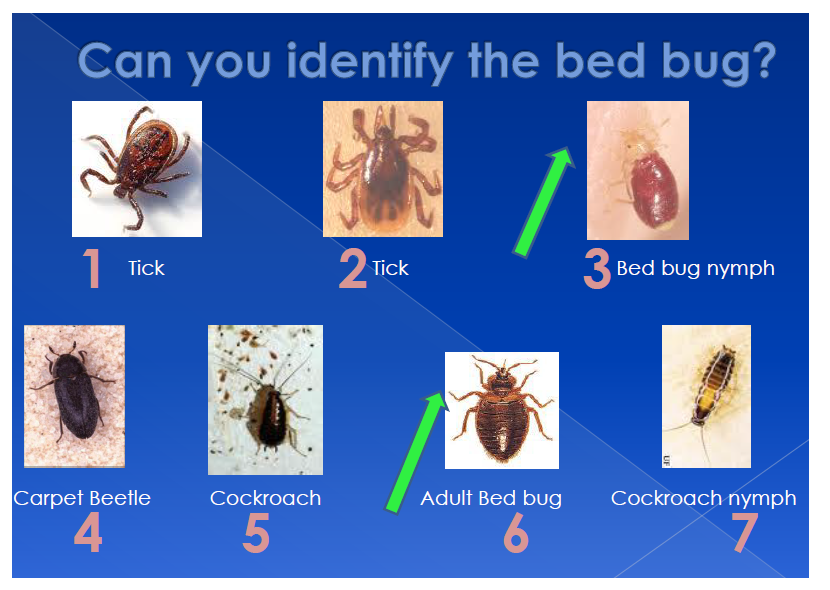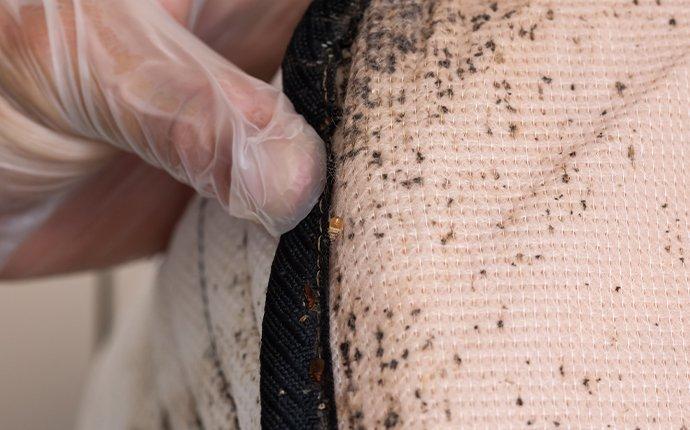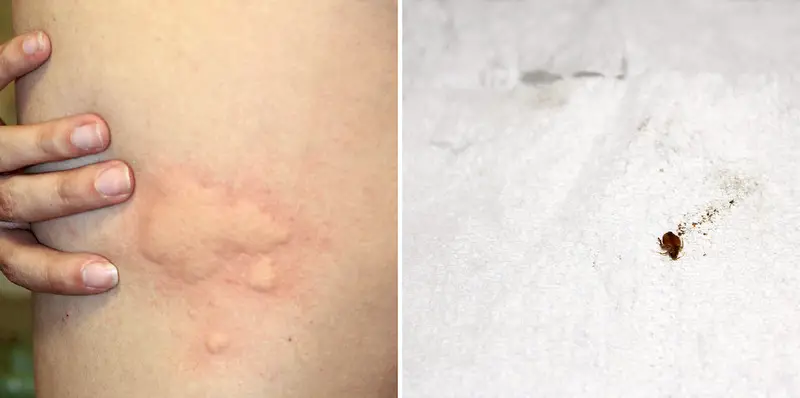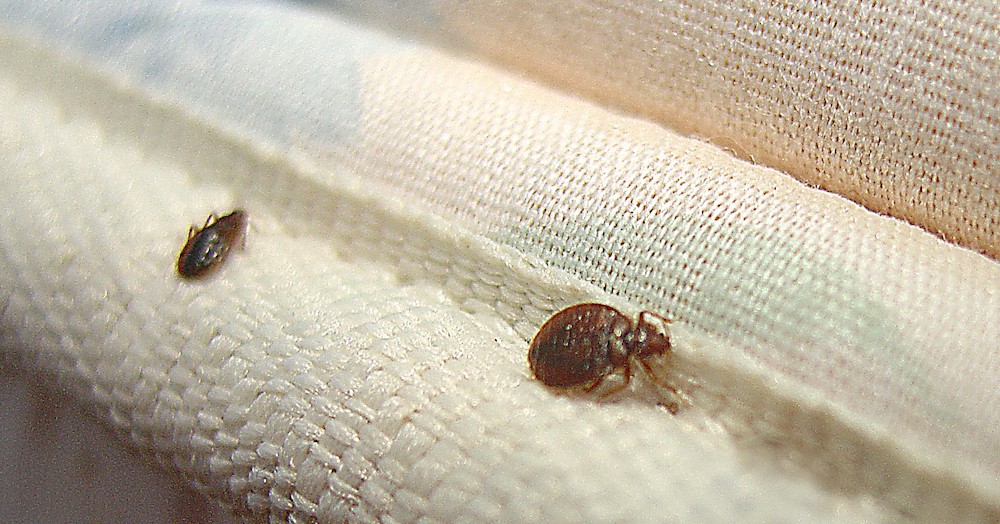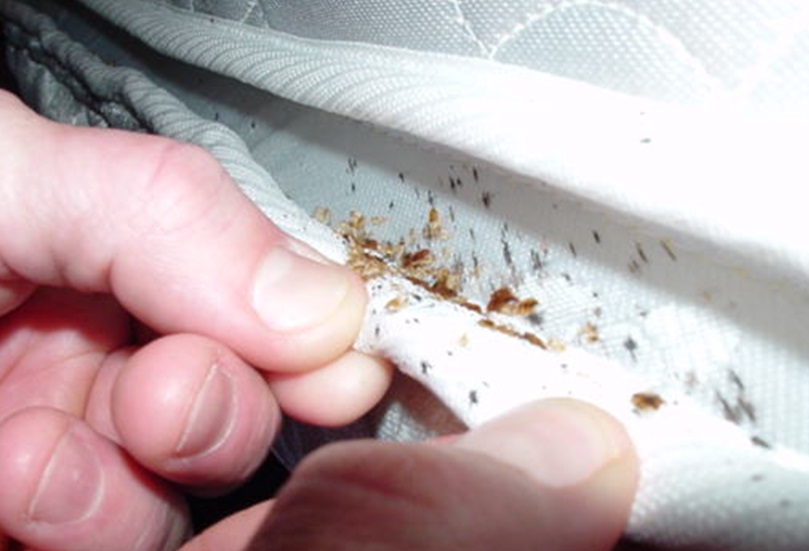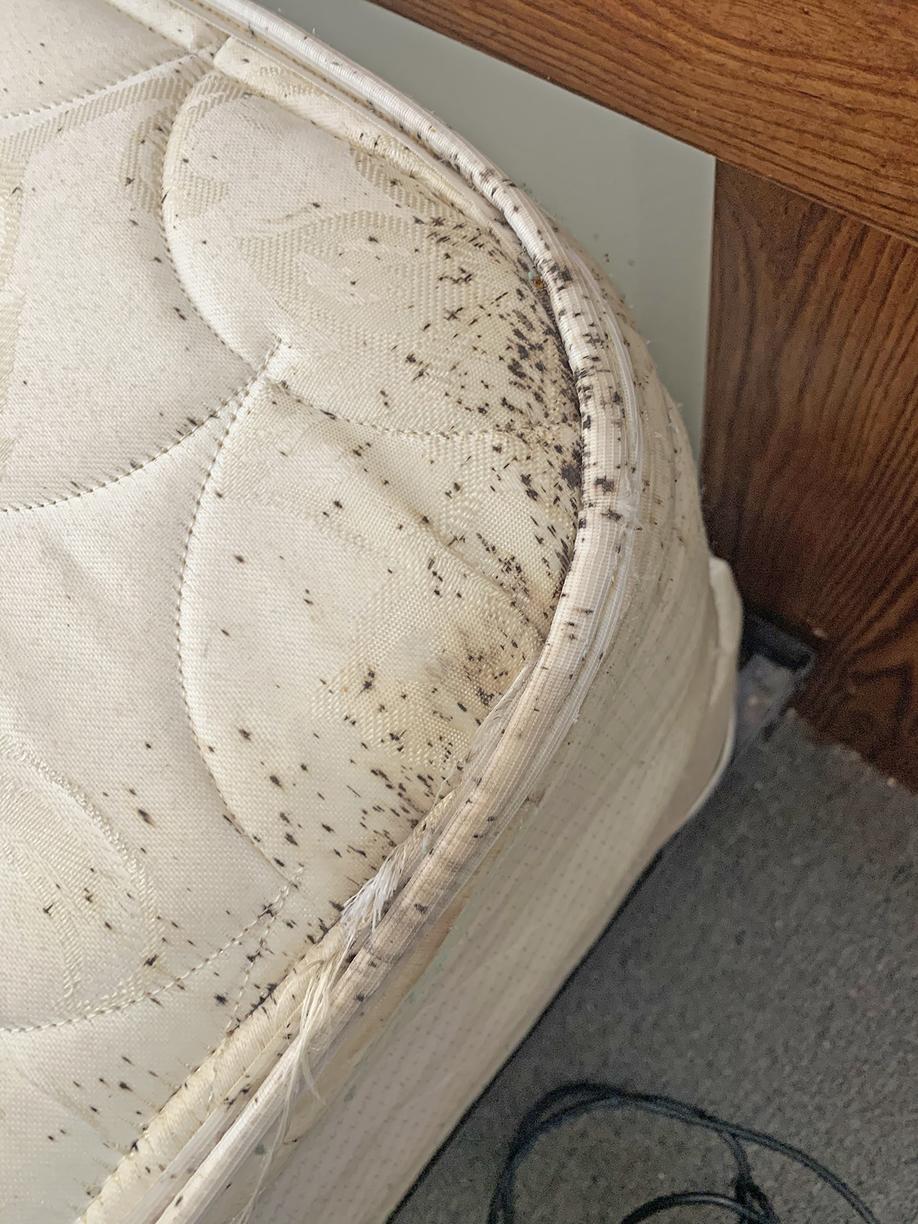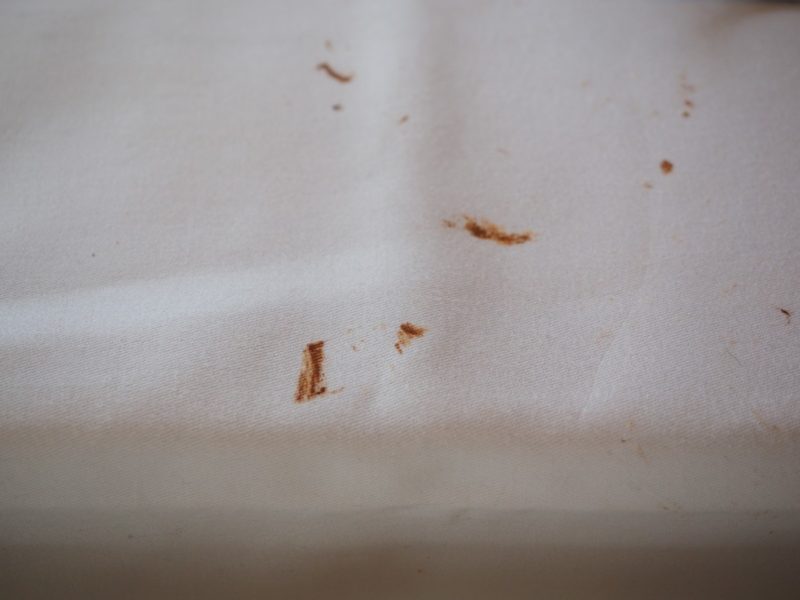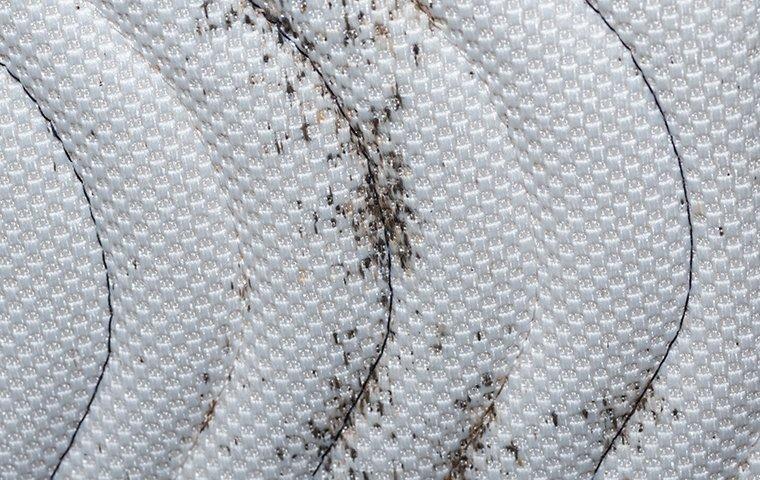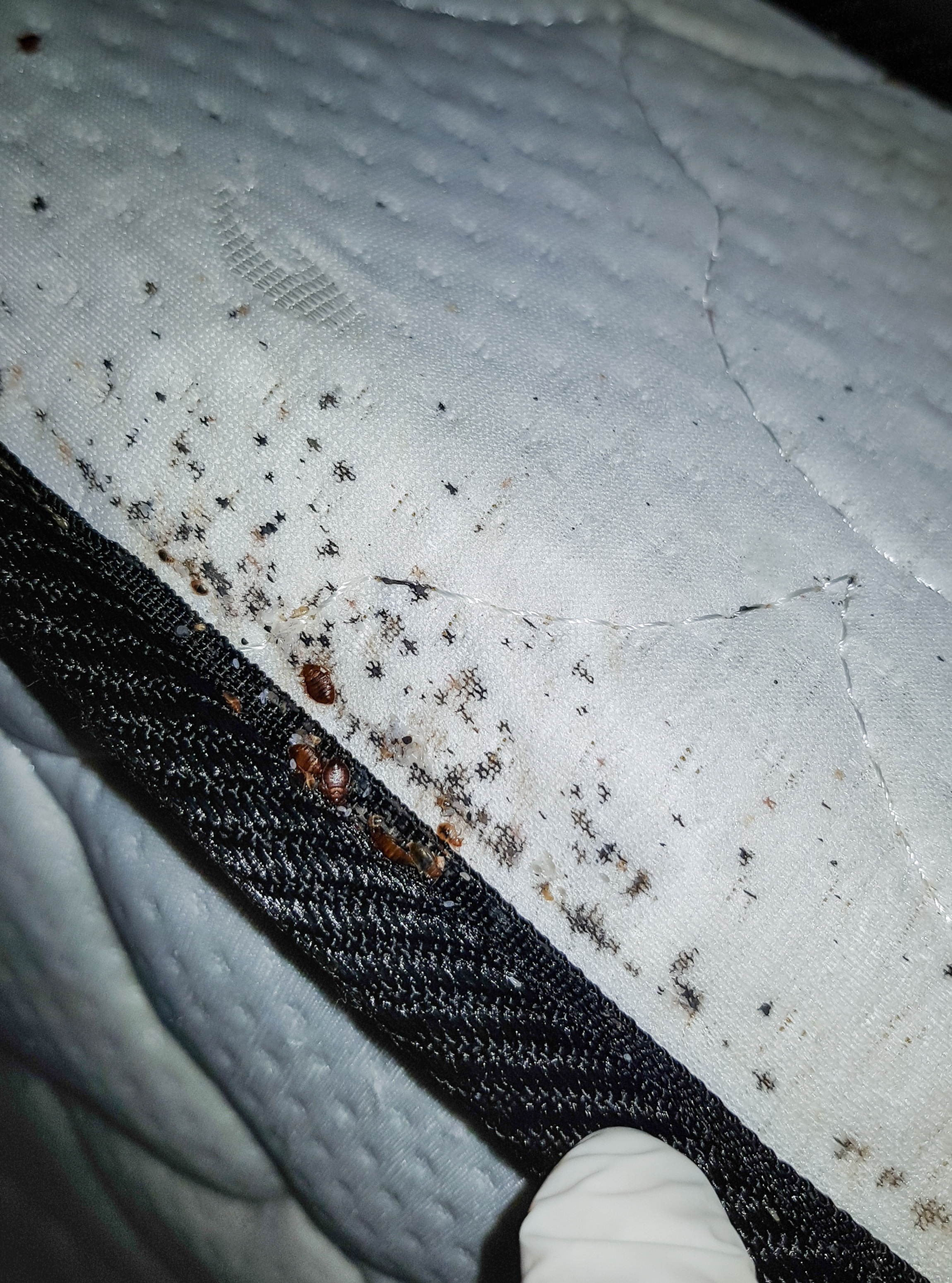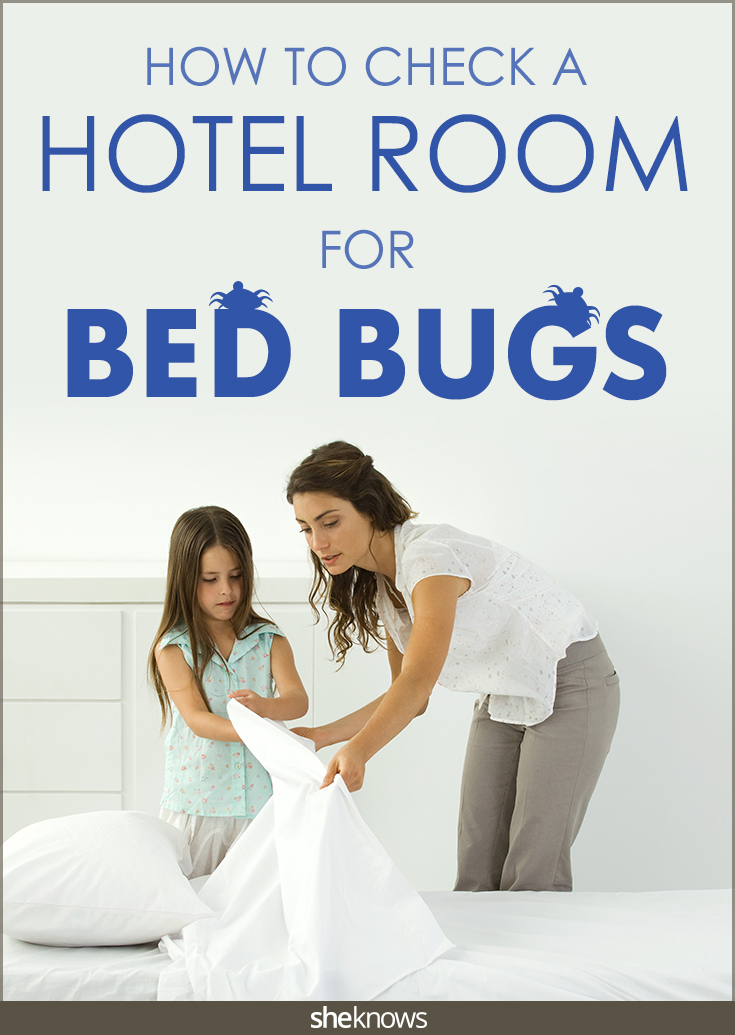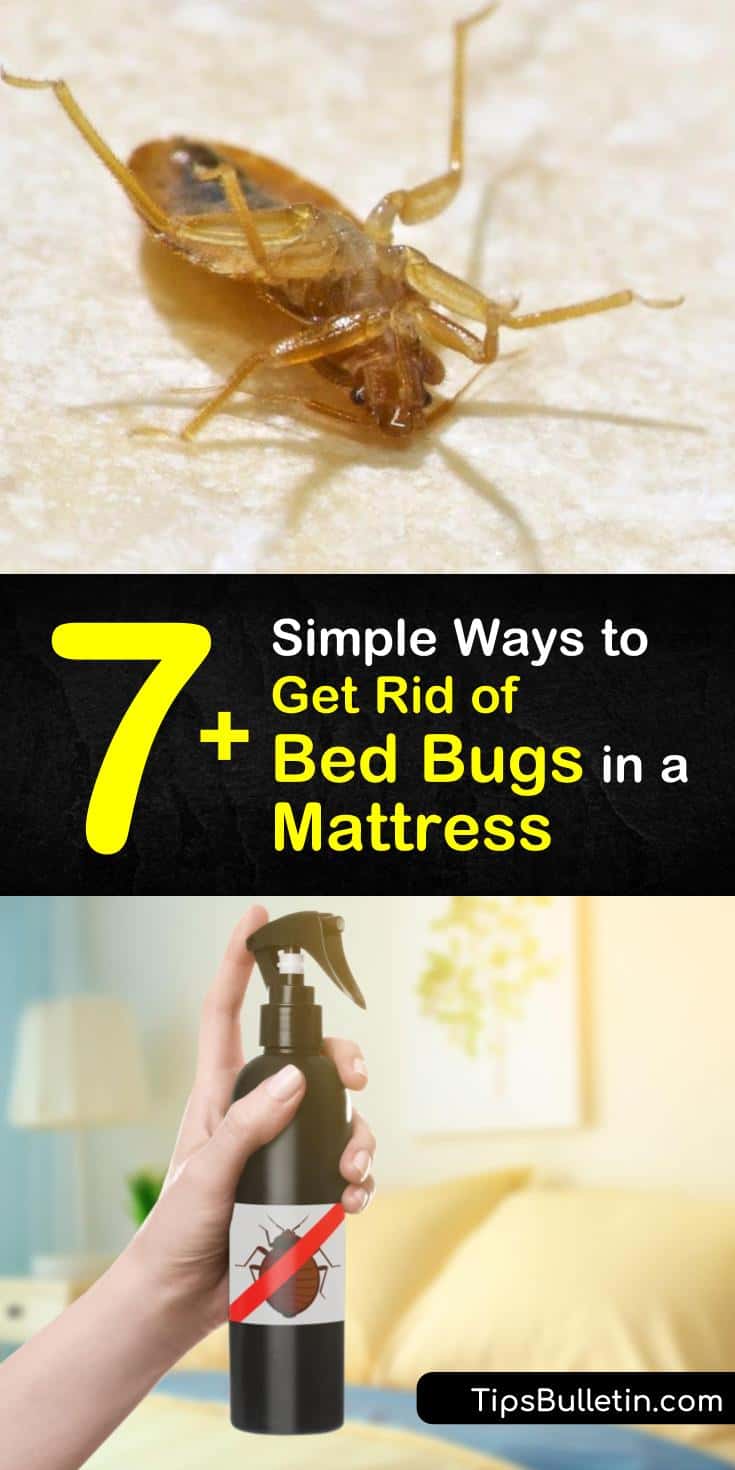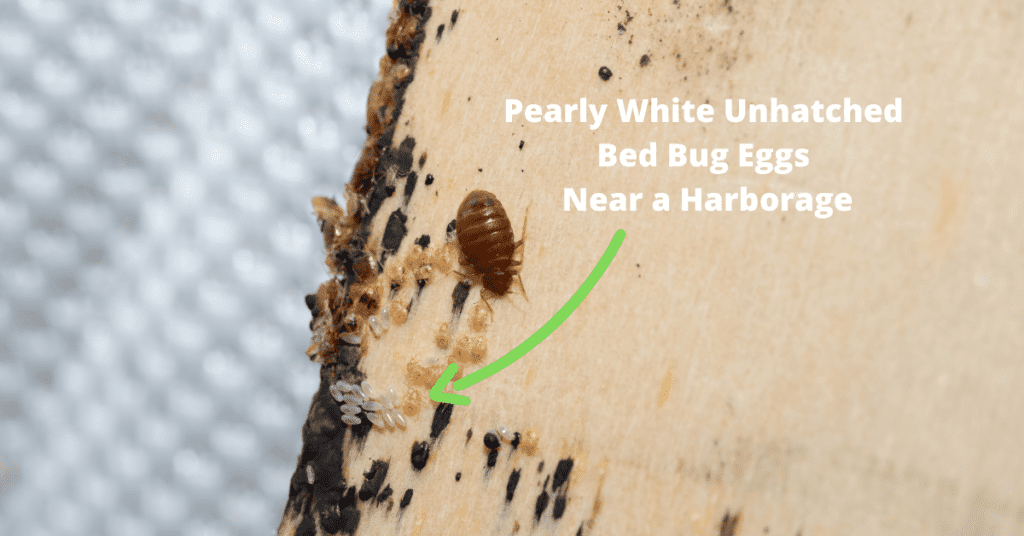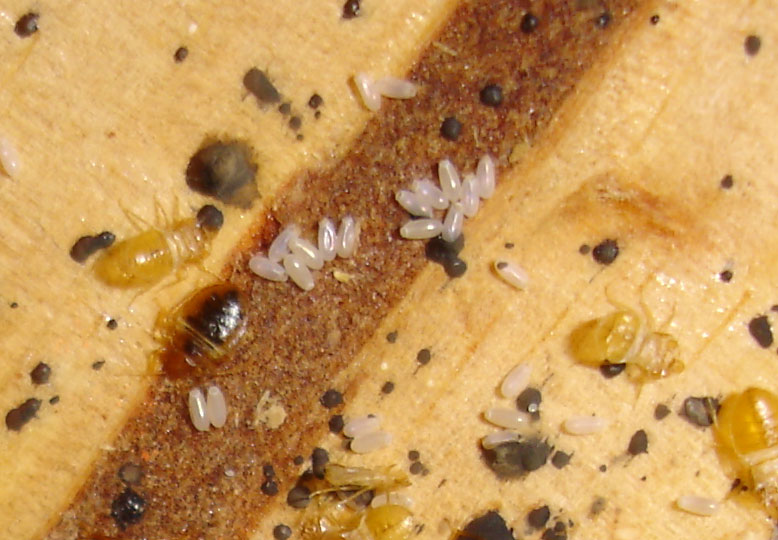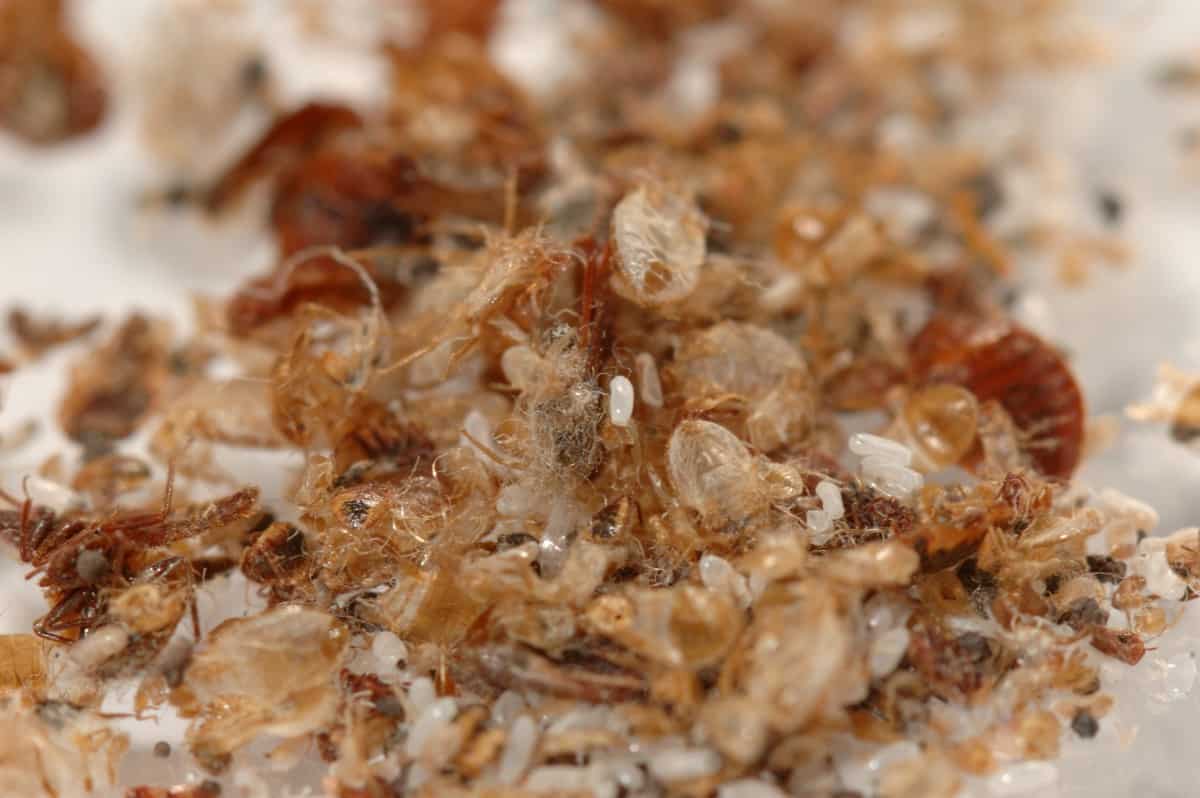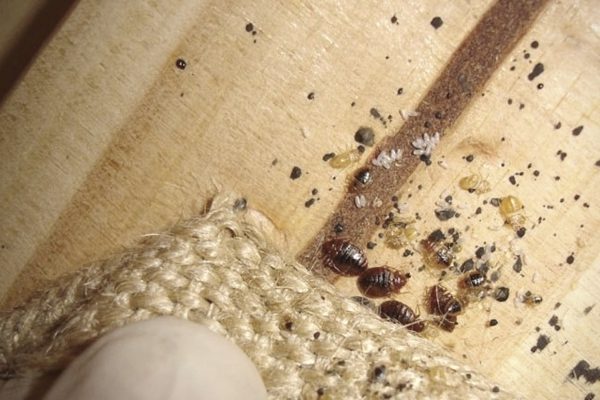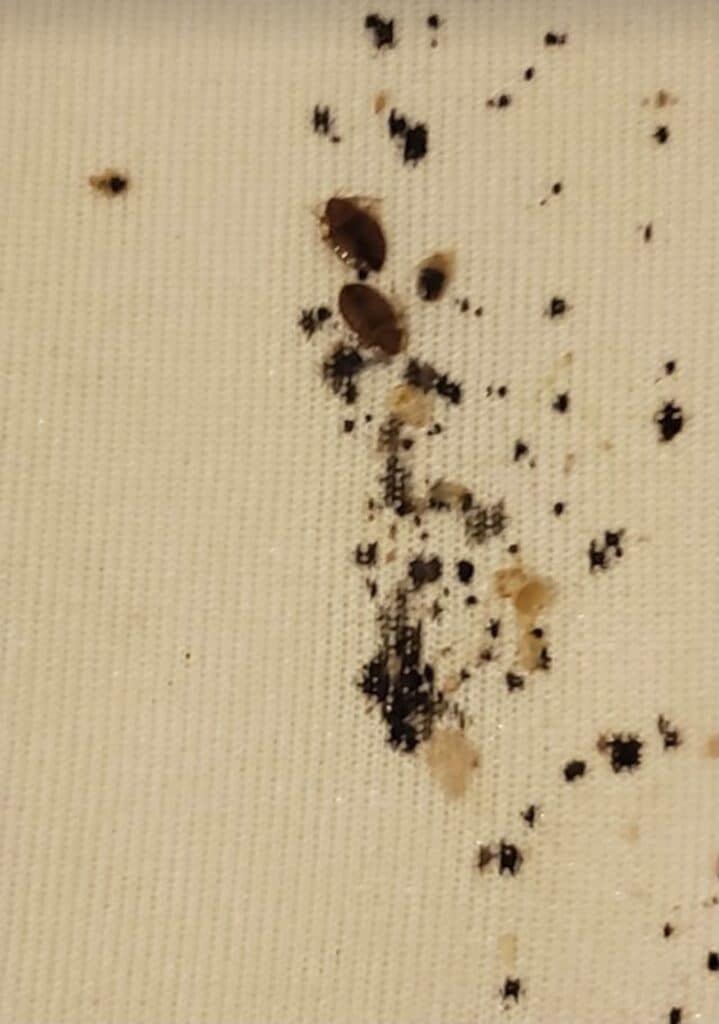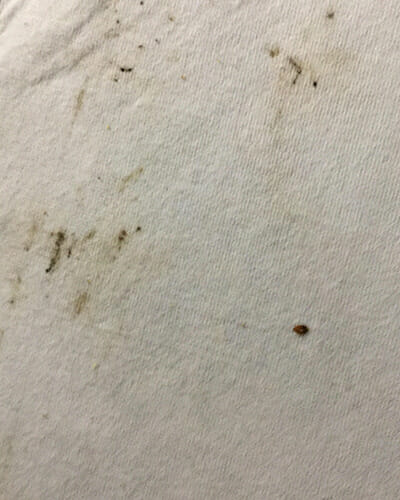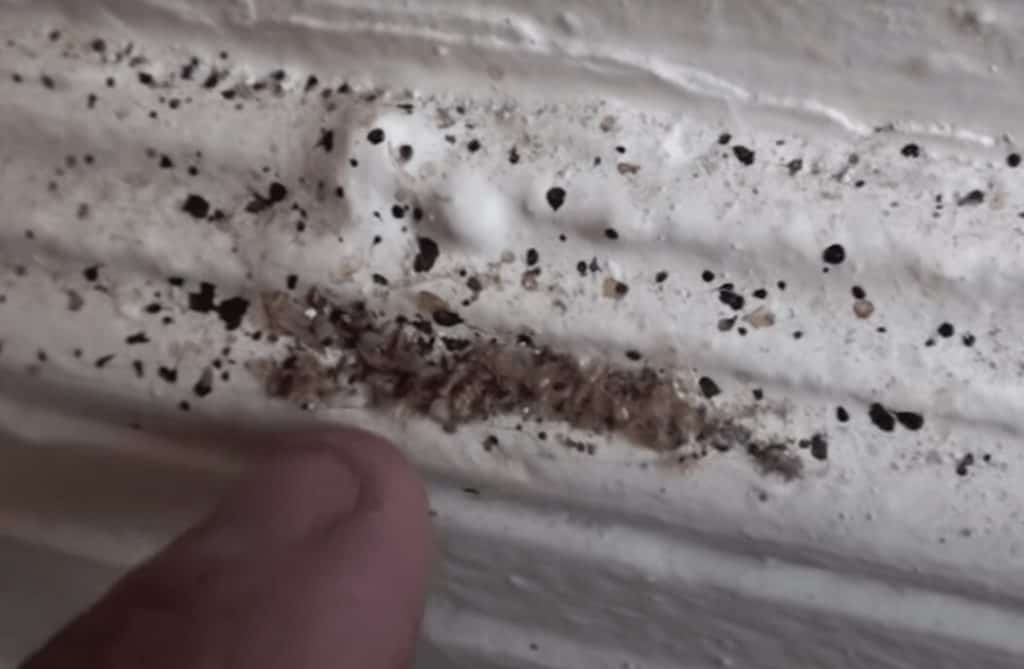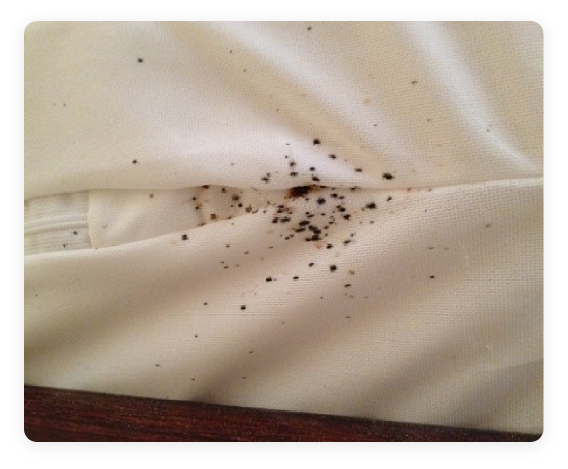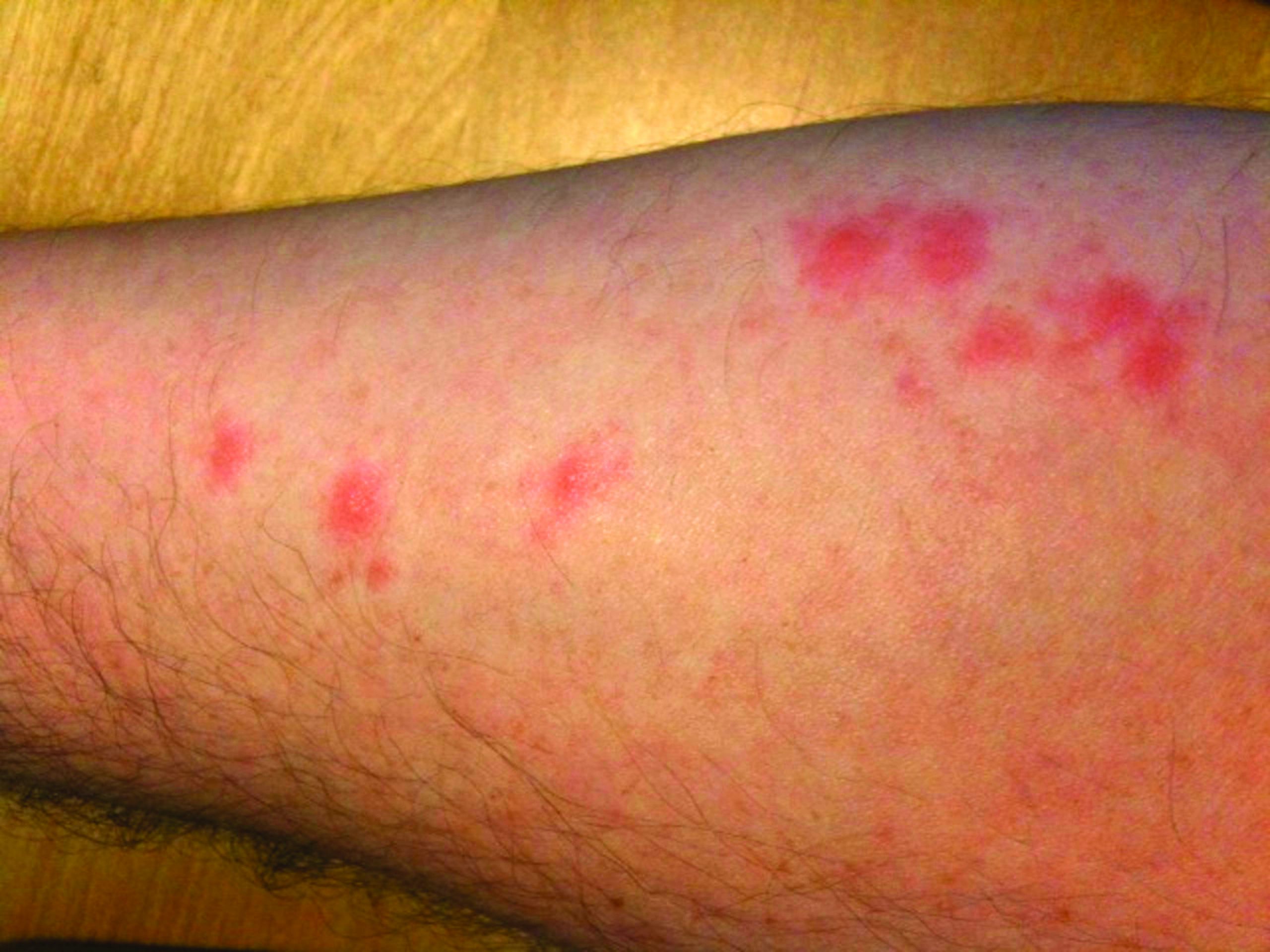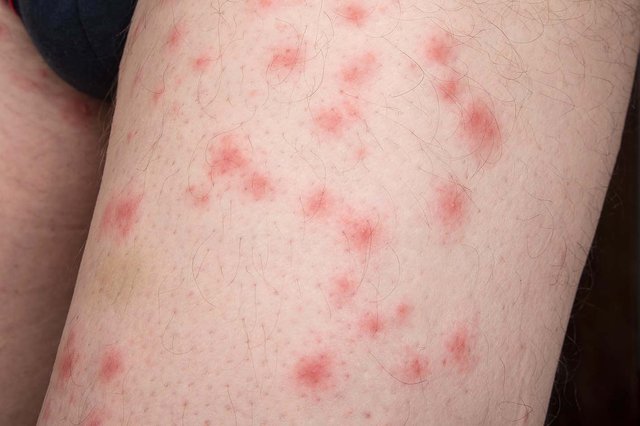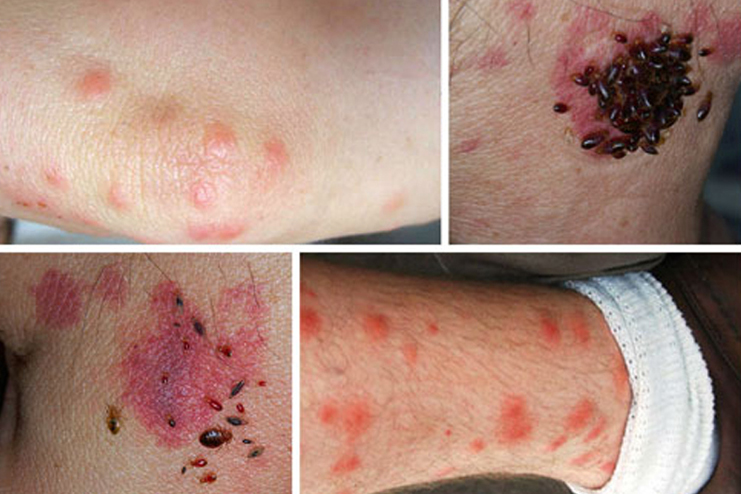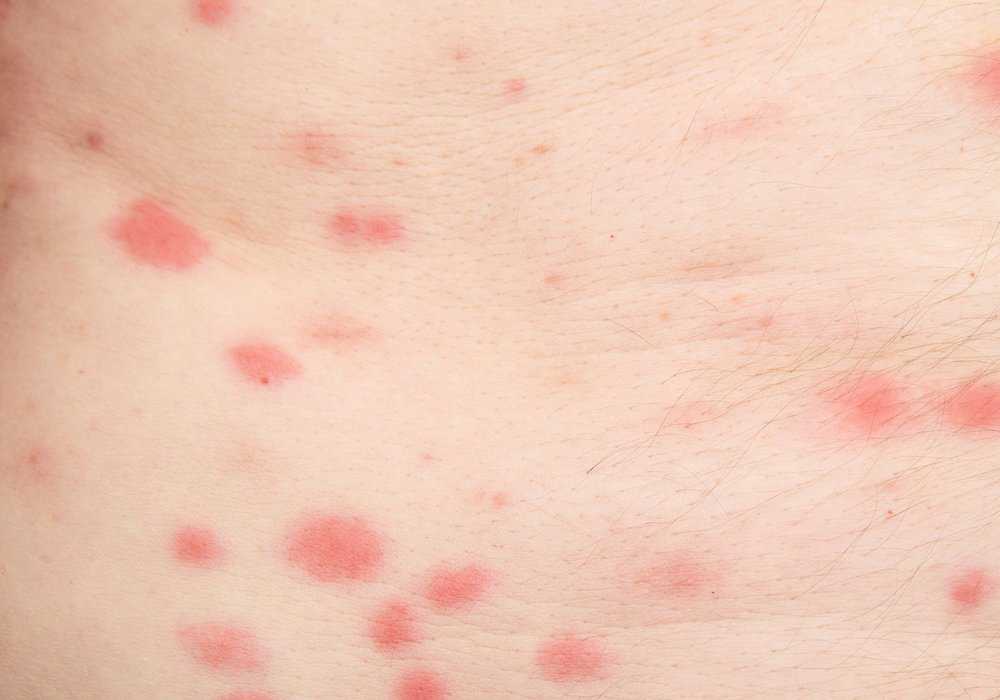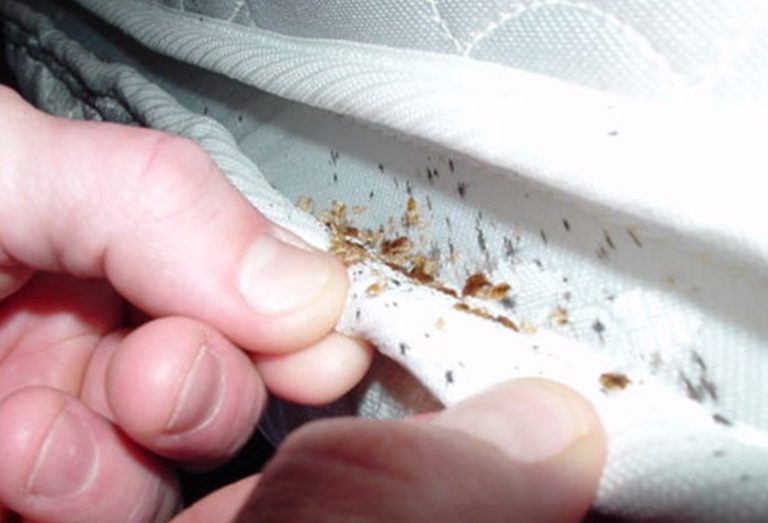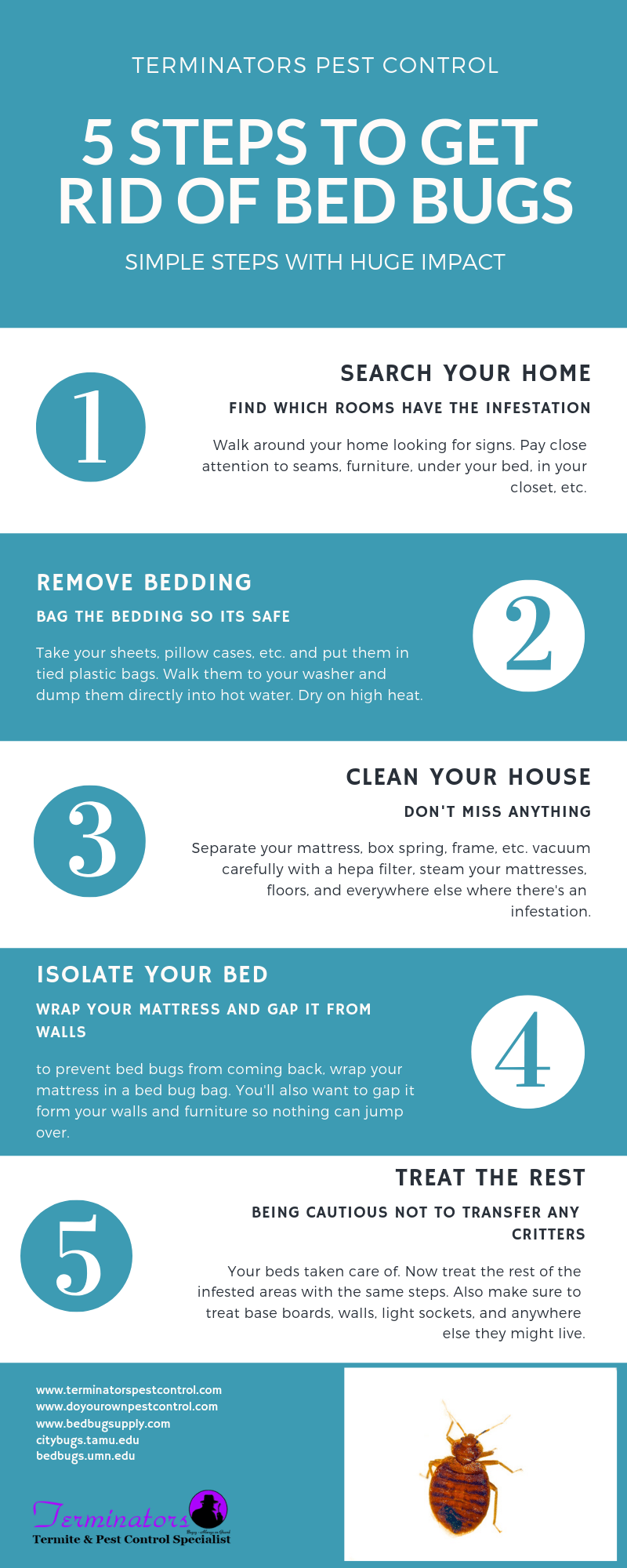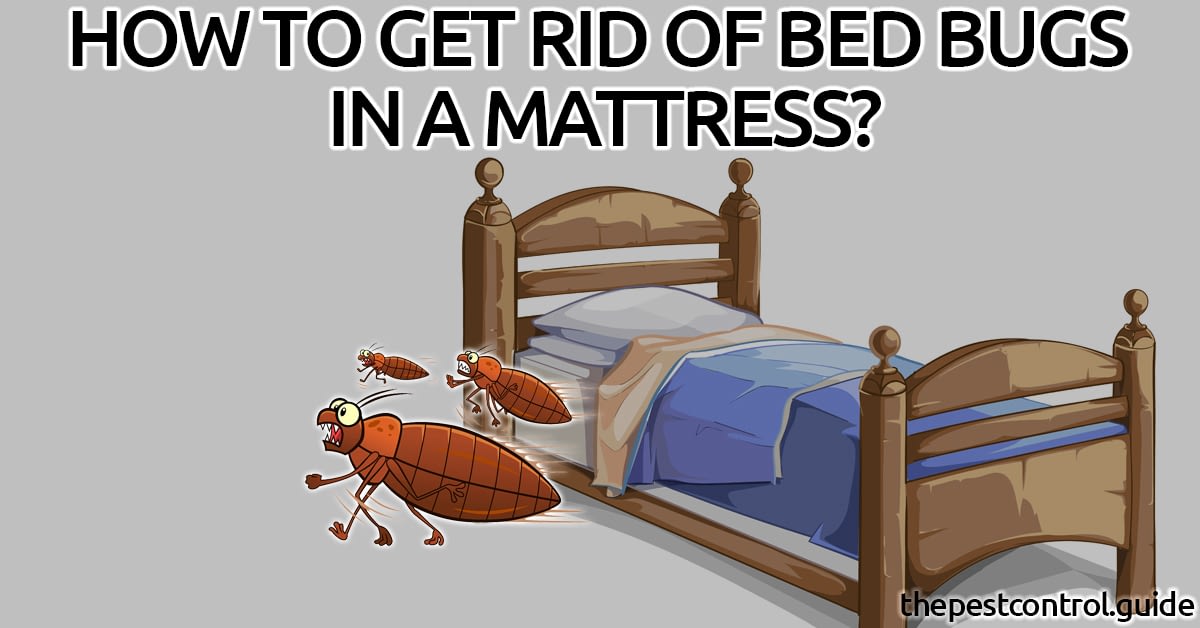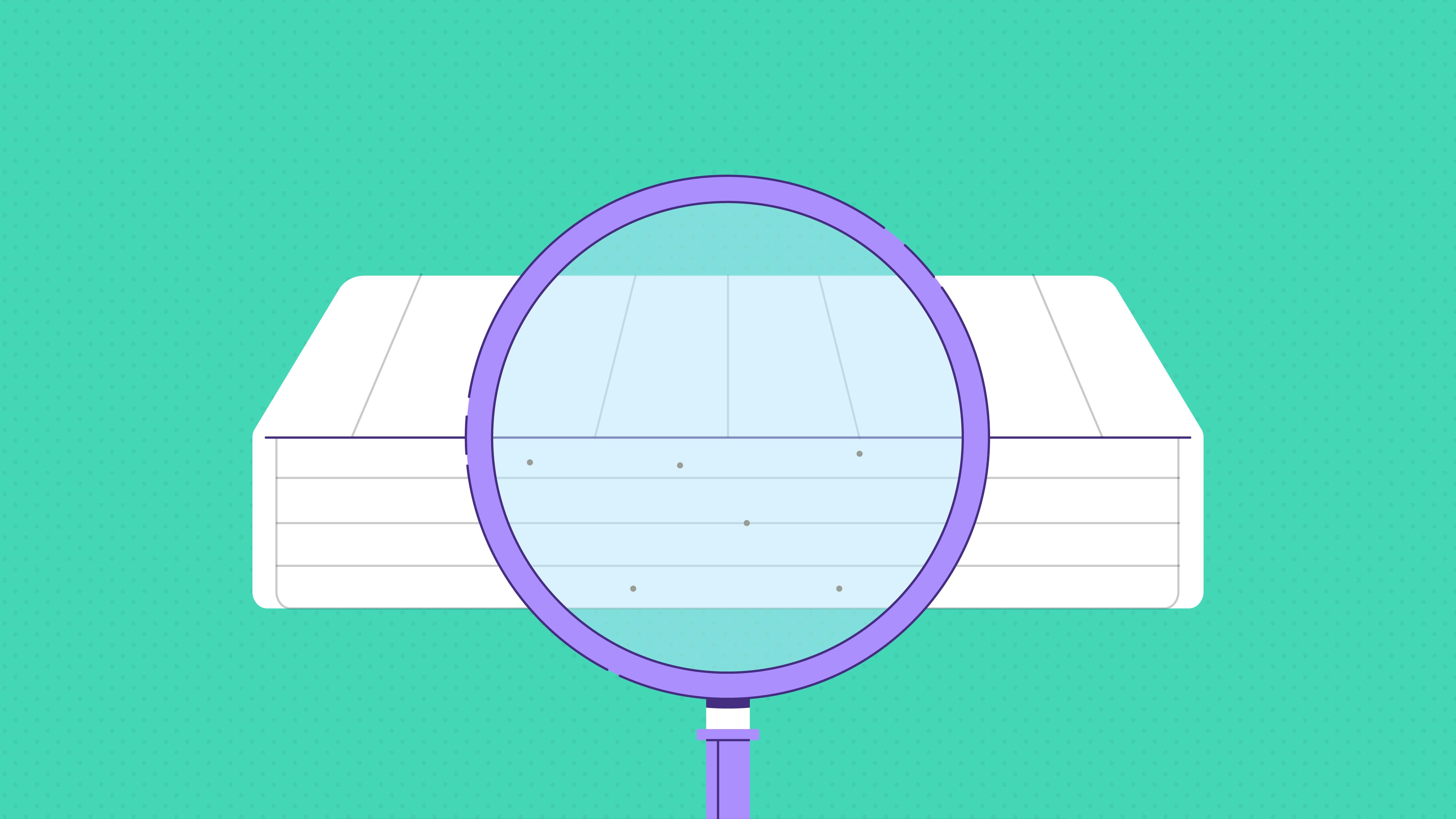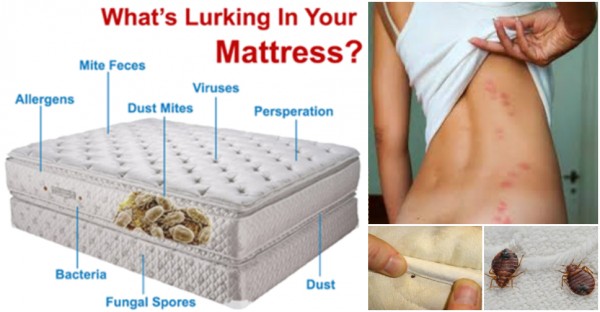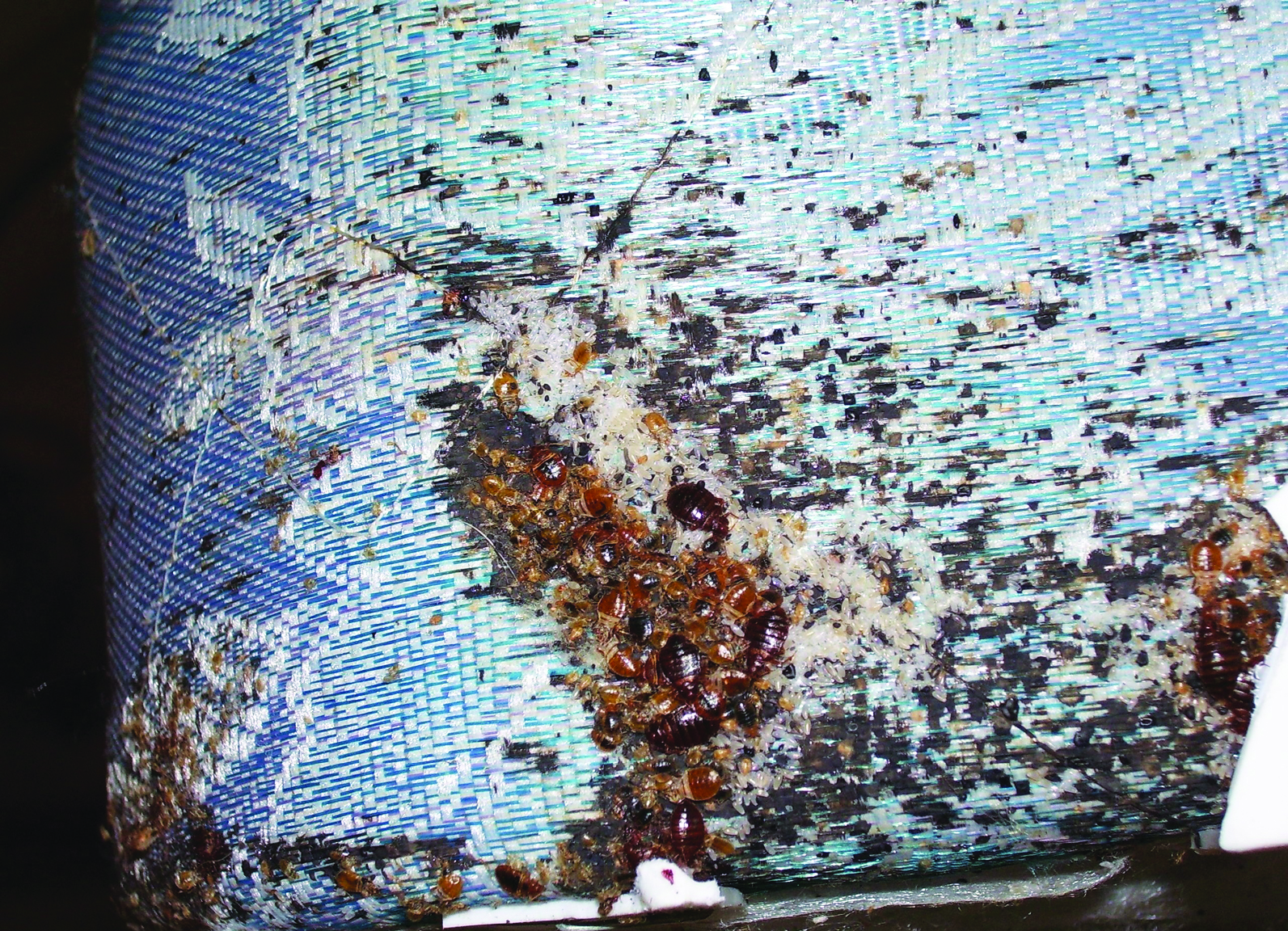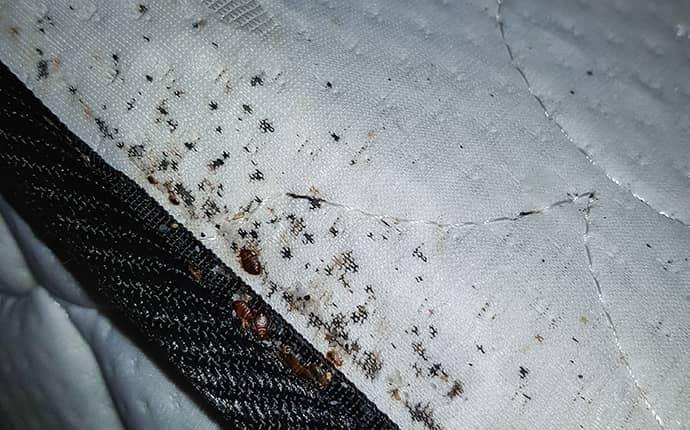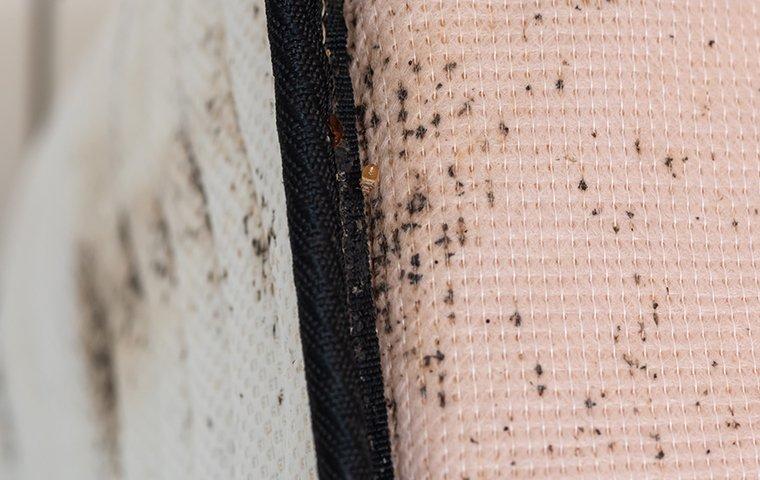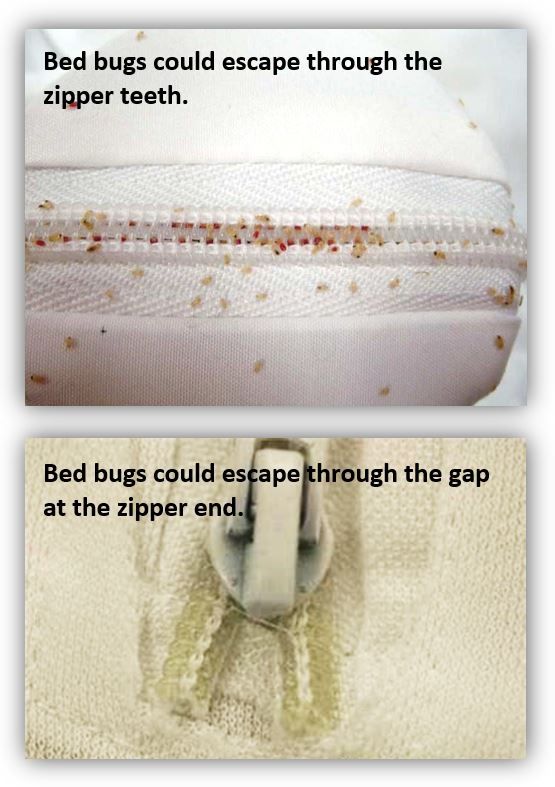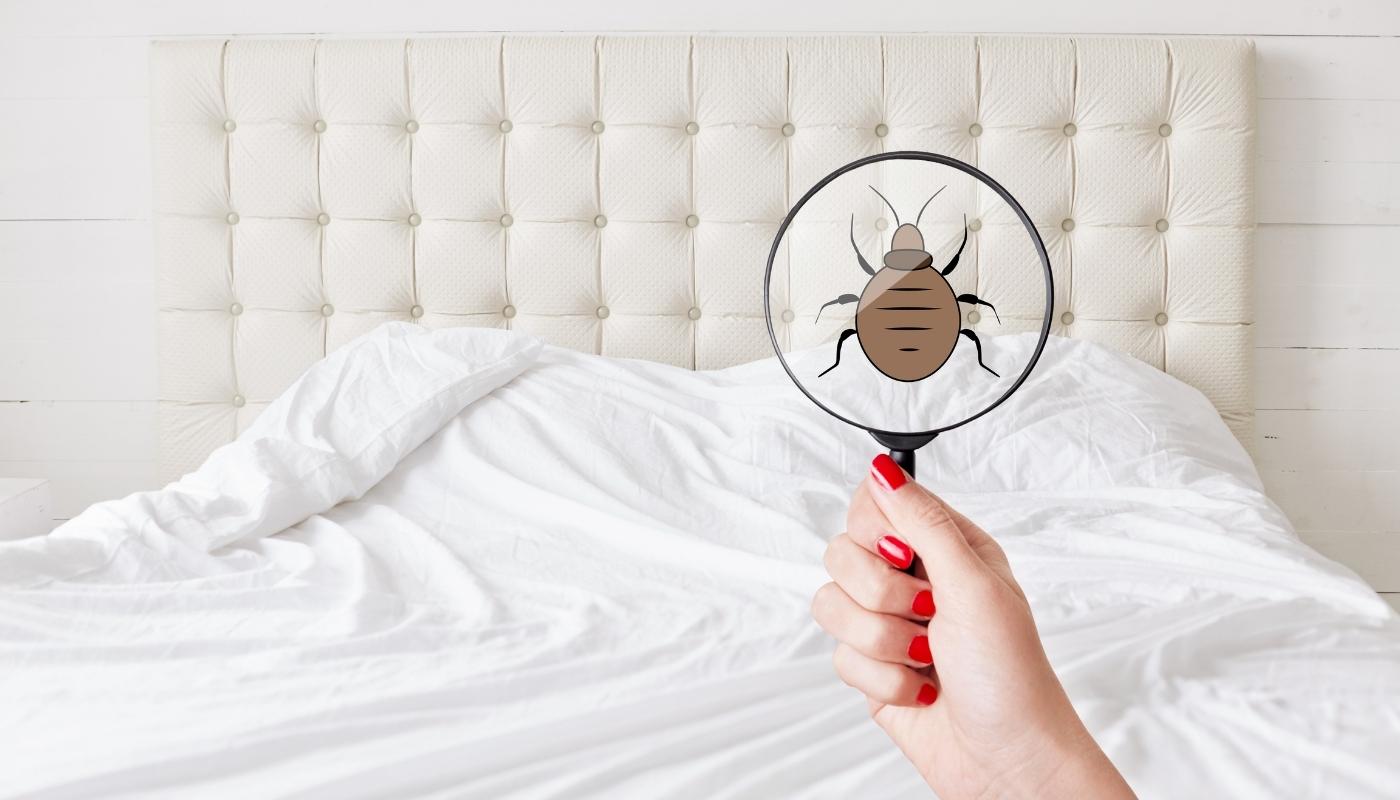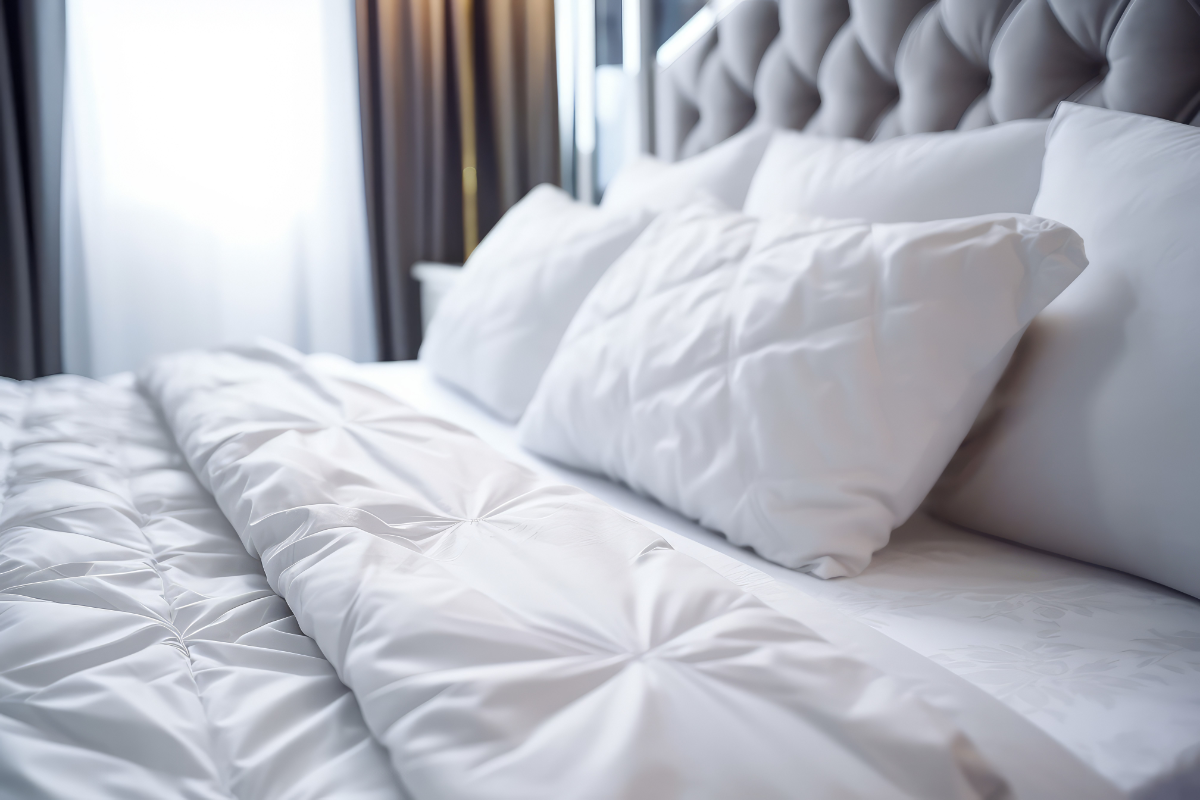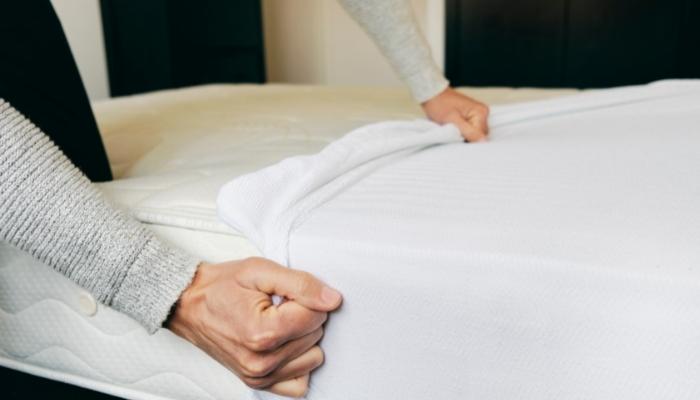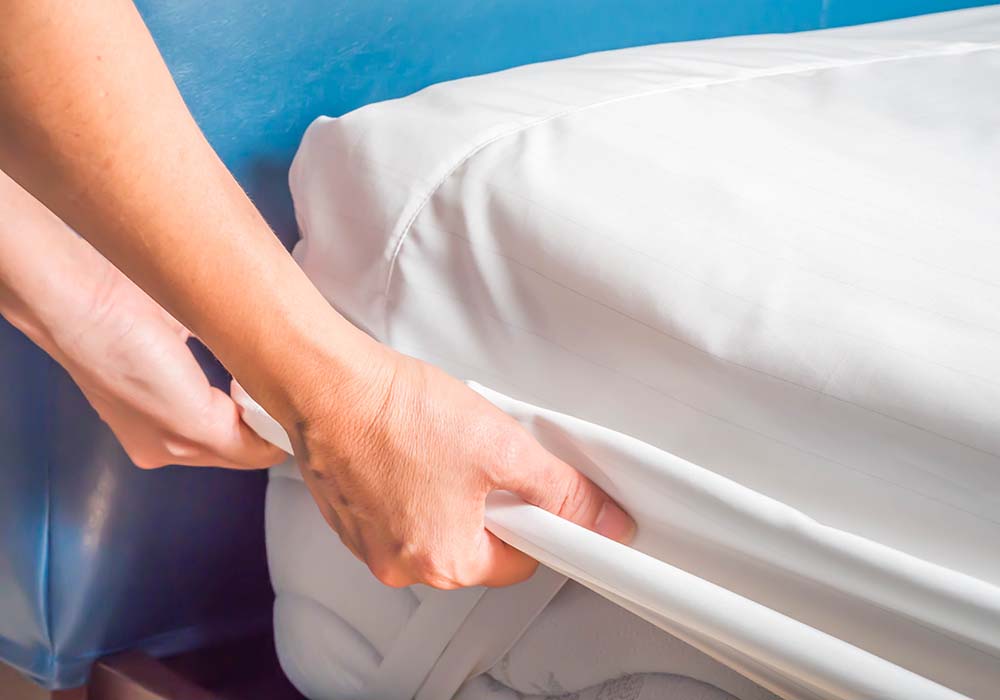Bed bugs are small pests that can infest your home and cause numerous problems. One of the most common places to find bed bugs is on your mattress. These tiny creatures are nocturnal and feed on human blood, making your bed the perfect place for them to thrive. If you suspect that your mattress may be infested with bed bugs, here are some of the top signs to look out for. 1. Musty Odor If you notice a musty or sweet odor in your bedroom, it could be a sign of bed bugs. These pests release pheromones that have a distinct smell, often described as musty or sweet. If you can't find any other evidence of bed bugs, but notice this odor, it's worth investigating further. 2. Rusty or Dark Spots on Mattress Bed bugs leave behind dark or rusty spots on your mattress, which are actually their fecal matter. These spots may be found on the mattress or on the sheets, and they can be a telltale sign of a bed bug infestation. 3. Blood Stains on Sheets When bed bugs bite, they leave behind small droplets of blood. If you notice any blood stains on your sheets or pillowcases, it could be a sign of bed bugs. These pests are attracted to the smell of blood and will often feed on exposed skin while you sleep. 4. Shed Skins Bed bugs shed their skins as they grow, and these skins can often be found on your mattress. They are usually translucent and can be difficult to spot, but if you find multiple skins on your mattress, it's a strong indication of a bed bug infestation. 5. Live Bugs If you're lucky, you may actually spot live bed bugs on your mattress. These pests are small, about the size of an apple seed, and are reddish-brown in color. They are most active at night and can be difficult to spot, but if you see one crawling on your mattress, it's a clear sign of an infestation. Signs of Bed Bugs on Mattresses
If you have any suspicion that your mattress may be infested with bed bugs, it's important to properly identify them before taking any action. Here are some steps to help you identify bed bugs on your mattress: 1. Examine Your Mattress Start by carefully examining your mattress for any signs of bed bugs. Look for dark spots, shed skins, and live bugs. Use a flashlight to get a better view and pay special attention to seams, crevices, and tufts where bed bugs like to hide. 2. Check Your Sheets and Pillowcases Next, check your sheets and pillowcases for any signs of bed bugs. Look for blood stains, dark spots, or live bugs crawling on the fabric. If you find any evidence, it's likely that your mattress is infested. 3. Use a Bed Bug Detector If you're still unsure, you can use a bed bug detector to confirm the presence of bed bugs on your mattress. These devices emit carbon dioxide, which attracts bed bugs, and can help you locate any hidden infestations. How to Identify Bed Bugs on a Mattress
One of the most common pieces of evidence of bed bugs on a mattress is the presence of stains. These stains can be caused by the bed bugs' fecal matter or by blood droplets from their bites. Here's what to look for: 1. Fecal Matter Bed bugs leave behind dark or rusty spots on your mattress, which are actually their fecal matter. These spots may be found on the mattress or on the sheets, and they can be a telltale sign of a bed bug infestation. 2. Blood Stains When bed bugs bite, they leave behind small droplets of blood. These can appear as small red or brown stains on your mattress or sheets. If you find multiple blood stains, it's a strong indication of a bed bug infestation. 3. Urine Stains In addition to fecal and blood stains, bed bugs may also leave behind urine stains on your mattress. These stains can be yellow or brown and may have a strong odor. If you find these stains on your mattress, it's a clear sign of a bed bug infestation. Bed Bug Stains on Mattresses
Regularly checking your mattress for bed bugs is an important part of preventing and controlling infestations. Here's how to properly check for bed bugs on your mattress: 1. Strip Your Bed Start by stripping your bed of all sheets, pillowcases, and blankets. This will give you a clear view of your mattress and make it easier to spot any signs of bed bugs. 2. Use a Flashlight Use a flashlight to thoroughly inspect your mattress, paying special attention to seams, crevices, and tufts. Bed bugs like to hide in these areas, so be sure to check them carefully. 3. Look for Signs of Bed Bugs As mentioned before, look for dark or rusty spots, shed skins, and live bugs. These are all signs of a bed bug infestation on your mattress. 4. Check the Rest of Your Room If you find any signs of bed bugs on your mattress, it's important to check the rest of your room as well. Bed bugs can spread to other areas of your home, so be sure to thoroughly inspect your furniture, baseboards, and other areas where they may be hiding. How to Check for Bed Bugs on a Mattress
One of the most difficult stages of a bed bug infestation to detect is the presence of eggs. These tiny, white eggs are usually found in clusters and are about the size of a pinhead. Here's what to look for: 1. Small White Eggs Bed bug eggs are small and white, about the size of a pinhead. They are usually found in clusters and may be attached to fabric or hidden in seams or crevices of your mattress. 2. Translucent Shells Once the eggs hatch, they leave behind translucent shells that can be difficult to spot. These shells may also be found in clusters on your mattress. 3. Use a Magnifying Glass If you're having trouble spotting the eggs, you can use a magnifying glass to get a closer look. This will make it easier to identify any eggs or shells on your mattress. Bed Bug Eggs on Mattresses
As mentioned before, one of the most common signs of bed bugs on a mattress is the presence of fecal matter. Here's what to look for: 1. Dark or Rusty Spots Bed bugs leave behind dark or rusty spots on your mattress, which are actually their fecal matter. These spots may be found on the mattress or on the sheets, and they can be a telltale sign of a bed bug infestation. 2. Check Your Sheets and Pillowcases In addition to checking your mattress, be sure to thoroughly inspect your sheets and pillowcases for any signs of bed bug fecal matter. These stains may also be found on your clothing or other fabrics in your bedroom. 3. Use a Black Light If you're having trouble spotting the fecal matter, you can use a black light to make it more visible. Bed bug fecal matter will glow under a black light, making it easier to locate on your mattress or other fabrics. Bed Bug Fecal Matter on Mattresses
Bed bugs feed on human blood, and their bites can cause itchy, red welts on your skin. Here's what to look for: 1. Red, Itchy Bites Bed bug bites are usually small, red, and itchy. They may appear in a line or cluster on your skin and can be easily mistaken for mosquito bites. 2. Check Your Mattress If you suspect that you have bed bug bites, be sure to check your mattress for any signs of the pests. Bed bugs are often found in clusters, so if you find multiple bites, it's likely that your mattress is infested. 3. Consult a Doctor If you have a severe reaction to bed bug bites or are unsure if they are caused by bed bugs, consult a doctor. They can help determine the cause of your bites and provide treatment if needed. Bed Bug Bites on Mattresses
Dealing with a bed bug infestation on your mattress can be a daunting task, but it's important to take immediate action to prevent the problem from getting worse. Here are some steps to help you get rid of bed bugs on your mattress: 1. Isolate Your Mattress The first step is to isolate your mattress from the rest of your bedroom. This will prevent the bed bugs from spreading to other areas of your home. 2. Vacuum Thoroughly Using a vacuum with a HEPA filter, thoroughly vacuum your mattress, paying special attention to seams, crevices, and tufts. This will help remove any bed bugs, eggs, or fecal matter from the surface of your mattress. 3. Steam Clean Steam cleaning is an effective way to kill bed bugs and their eggs on your mattress. Be sure to use a high-temperature steamer and go over the entire surface of your mattress. 4. Use Bed Bug Covers Invest in bed bug covers for your mattress and box spring. These covers will prevent bed bugs from infesting your mattress and make it easier to spot any future infestations. 5. Call a Professional If your infestation is severe, it's best to call a professional pest control company. They have the necessary equipment and expertise to effectively eliminate bed bugs from your mattress and prevent future infestations. How to Get Rid of Bed Bugs on a Mattress
Bed bug infestations on mattresses can quickly become a nightmare if not dealt with promptly. These pests reproduce quickly, and a single female bed bug can lay hundreds of eggs in her lifetime. Here are some signs that your mattress may be infested: 1. Multiple Signs of Infestation If you notice multiple signs of bed bugs on your mattress, such as fecal matter, shed skins, and live bugs, it's a clear indication of a widespread infestation. 2. Bed Bugs in Other Areas If you find bed bugs in other areas of your home, such as your furniture or baseboards, it's likely that they have also infested your mattress. 3. Continual Bites If you are continually getting bitten by bed bugs, even after taking measures to eliminate them from your mattress, it's a sign that the infestation is widespread and may require professional treatment. Bed Bug Infestations on Mattresses
Preventing bed bugs from infesting your mattress is much easier than trying to get rid of them once they're already there. Here are some steps you can take to prevent bed bugs on your mattress: 1. Use a Protective Cover Invest in a bed bug protective cover for your mattress and box spring. These covers are designed to keep bed bugs out and make it easier to spot any infestations. 2. Inspect Secondhand Furniture If you're buying secondhand furniture, be sure to thoroughly inspect it for any signs of bed bugs before bringing it into your home. This includes mattresses, couches, and other upholstered items. 3. Be Cautious When Traveling When traveling, be cautious when staying in hotels or rental properties. Always check the mattress and bedding for any signs of bed bugs before settling in. 4. Regularly Inspect Your Mattress Regularly inspect your mattress for any signs of bed bugs, and take immediate action if you notice any evidence. This will help prevent infestations from becoming widespread and more difficult to eliminate. 5. Call a Professional If you do discover a bed bug infestation on your mattress, it's best to call a professional pest control company for treatment. They can help eliminate the problem and provide tips for preventing future infestations. How to Prevent Bed Bugs on a Mattress
The Dangers of Bed Bugs Evidence on Mattresses

When it comes to designing a comfortable and inviting home, one of the most important elements is a good mattress. However, what many people don't realize is that even the most luxurious and expensive mattresses can harbor a hidden and dangerous threat: bed bugs .
What are Bed Bugs?

Bed bugs are tiny, reddish-brown insects that feed on the blood of humans and animals. They are typically found in warm and cozy places, such as mattresses, bedding, and furniture. They are most active at night and can easily go unnoticed as they hide in crevices and cracks.
The Evidence of Bed Bugs on Mattresses
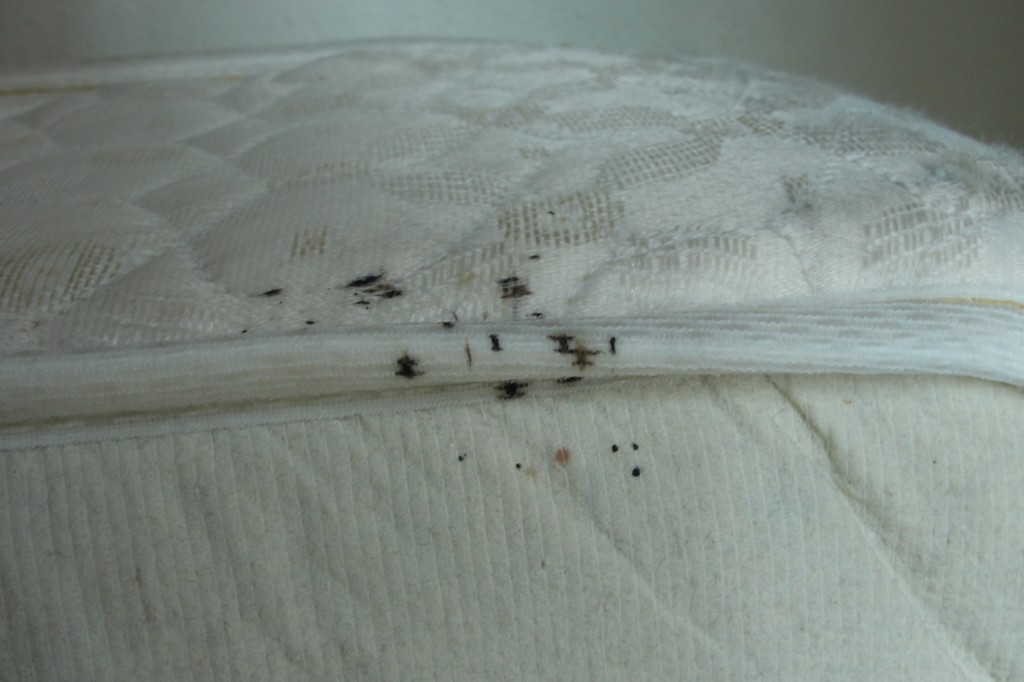
One of the most common signs of a bed bug infestation is the presence of bed bug evidence on mattresses . This can include dark spots or stains on the mattress, which are actually bed bug fecal matter. You may also notice tiny, pale yellow eggs or shed skins on the mattress, which are left behind by bed bugs as they go through their life cycle.
Another telltale sign of bed bugs on mattresses is the presence of small, flat, and oval-shaped insects. These are the actual bed bugs themselves and they can often be found hiding in the seams, folds, or tufts of the mattress. If you see any of these signs, it is important to take action immediately to prevent the infestation from spreading.
The Dangers of Bed Bugs on Mattresses

Aside from being a nuisance and causing discomfort, bed bugs can also pose serious health risks. Their bites can cause allergic reactions, skin irritation, and even infections. In addition, bed bugs have been known to carry and transmit diseases such as chagas disease and hepatitis B .
Moreover, the presence of bed bugs in your mattress can also affect your quality of sleep. The constant itching and discomfort can lead to sleepless nights, which can greatly impact your overall well-being and productivity.
Preventing and Eliminating Bed Bugs on Mattresses

Fortunately, there are steps you can take to prevent and eliminate bed bugs on your mattress. Regularly vacuuming and inspecting your mattress can help to catch any signs of infestation early on. Additionally, using a bed bug-proof mattress cover can prevent bed bugs from entering or escaping your mattress.
If you do find evidence of bed bugs on your mattress, it is important to properly dispose of it to prevent the infestation from spreading to other areas of your home. Professional pest control services can also be effective in eliminating bed bugs and preventing future infestations.
In Conclusion

While bed bugs may seem like a small and inconsequential threat, they can actually have a big impact on your home and health. By being aware of the evidence of bed bugs on mattresses and taking preventative measures, you can ensure a safe and comfortable living space for you and your loved ones.







